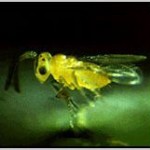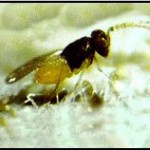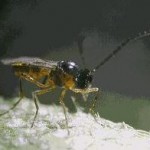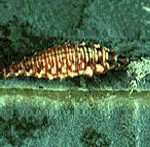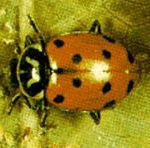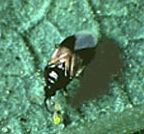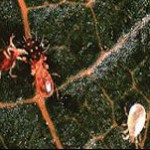Our Secret Weapon: Natural Predators in the Conservatory
by Frankie Geouge, Conservatory volunteer, Lewis Ginter Botanical Garden
Lewis Ginter chooses to use natural pest and disease controls whenever possible. In the ideal environment of the Conservatory, imported insect pests can multiply pretty quickly. As the frontline attack against insect invasions, we employ vigilant housekeeping and hand removal. When these efforts fail, we turn to biological remedies. Predatory insects can be the most effective weapons against harmful intruders. Mother nature, in her practical way, has provided us with predatory insects specific to each invader. The contained environments of the home or greenhouse would be ideal areas in which to use these warriors.
Here is a partial list of the predators we employ. If the problem is the pesky whitefly, the Conservatory routinely uses these two predators:
The ubiquitous and tenacious aphid is food for these three predators:
Tiny and elusive fungus gnats are prey for this warrior:
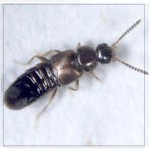
atheta coriaria: rove beetle Sticky, reclusive mealybugs are tasty to this defender:cryptolaemus montrozieri
Tiny, annoying thrips can be controlled with these two:
These are just a few of the predatory insects that are currently being used by horticulturists in public garden areas. If you choose to use predatory insects in your garden, be sure to familiarize yourself with their appearance and habits. They may be difficult to see once released, and some may go through stages that mimic detrimental insects. Pesticides wipe out both useful and harmful species, so don’t destroy your valuable investment with chemicals.
Thanks to Cornell University and the University of Massachusetts, Amherst for photographs.
Photos links:
http://www.biocontrol.entomology.cornell.edu/parasitoids/eretmocerus.html
http://www.biocontrol.entomology.cornell.edu/parasitoids/encarsia.html
http://www.biocontrol.entomology.cornell.edu/predators/Chrysoperla.html
http://www.biocontrol.entomology.cornell.edu/predators/Hippodamia.html
http://www.umass.edu/umext/floriculture/fact_sheets/pest_management/fungnat.html
http://www.biocontrol.entomology.cornell.edu/predators/Cryptolaemus.html
http://www.biocontrol.entomology.cornell.edu/predators/Orius.html
http://www.biocontrol.entomology.cornell.edu/predators/Neoseiulus.html
